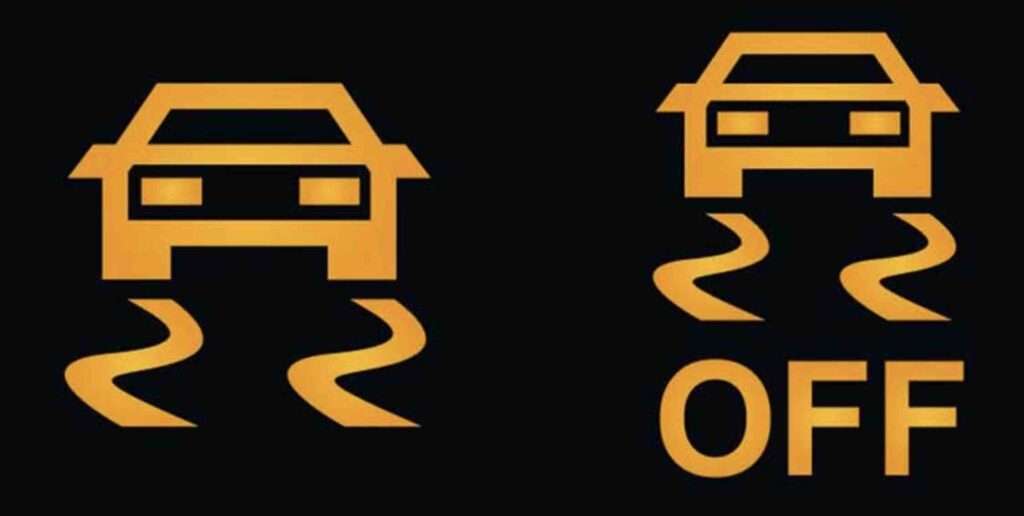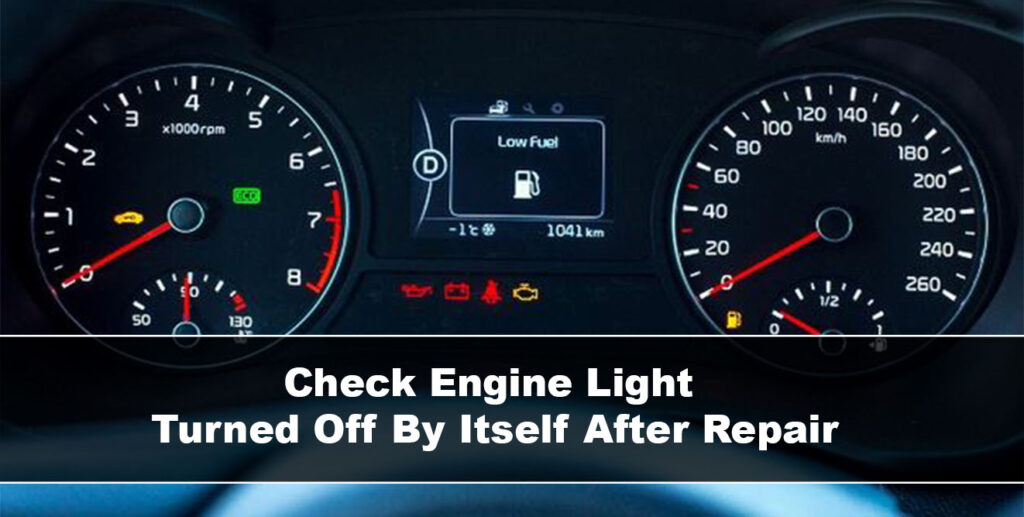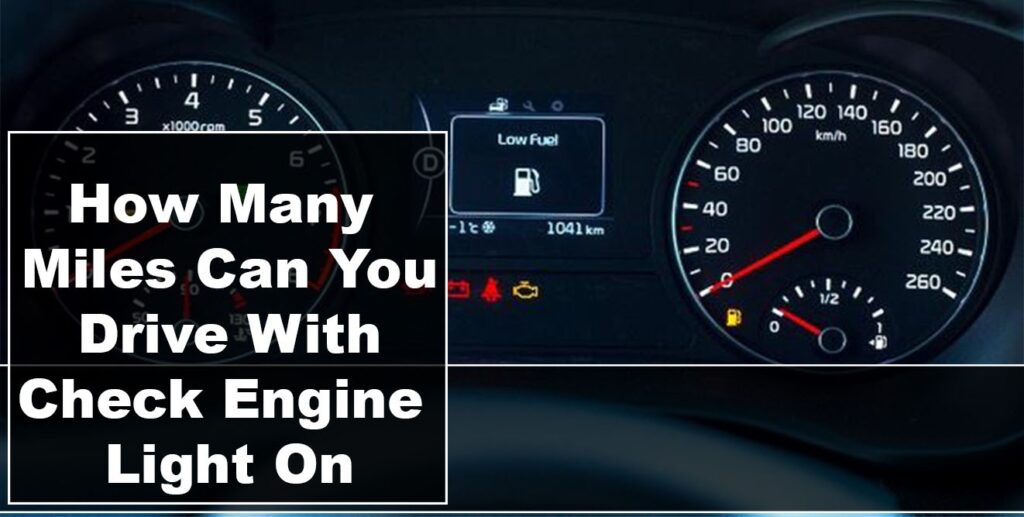Last updated on January 14th, 2023 at 10:12 am
Suppose you are wondering why is my traction control light on, or maybe you wondering whether it is safe to drive with traction control on, this post if for you. Additionally, we will also discuss How Do I Reset My Traction Control and Why won’t my traction control light go off.
It is indispensable that vehicle manufacturers have safety features introduced in today’s vehicles. The traction control system is one vital safety feature that helps your vehicle to make all traction on the surface in certain road circumstances.
However, this feature kicks in as your car struggles to speed up, especially on low-friction or slippery pathways. The traction control system functions in tandem with its wheel speed sensors; for monitoring the rotation speed of all wheels and a hydraulic modulator that pumps the vehicle’s brakes.
So far, if you are considering how safe it is to drive with a TCS light. Perchance, moving with the traction control on your vehicle is somewhat unsafe. Suppose it is rainy weather or a slippery path where you would eventually lose traction, though, without doubt, you might be at greater risk for a vehicle crash with another, slip or even spin if you continue to drive your vehicle.

Why Would Traction Control Light Come On In Chevy Cruze While Driving?
Your vehicle’s traction control system is designed to assist you in driving under adverse conditions like rain, snow, ice, or poor road maintenance. The warning light will be illuminated on the cluster of the dashboard cluster if the system isn’t working as it should. And this happens here are some of the common reasons why the traction control light comes on in your chevy Cruze while driving:
1. Faulty Front Tires
If your Chevy Cruze has faulty front tires, it will cause a traction control light to come on since the system is malfunctioning. Defect tires lose traction very often, so it is necessary to check, change and rotate your tires when necessary.
2. Wiring Issues
Weak, lousy, or burnt wires would emanate loss of traction or even cause loss of power in the vehicle. By experience, this is a vital issue when the traction control light comes on in your Chevy Cruze.
3. Lousy Computer Software
Technology has advanced high to make driving safer. But these programmed instructions could fail. So, if these programming issues spring up, your vehicle’s traction control light will come on immediately. For the system to be regular, reprogramming has to correct any error. Since programming (computer software) issues are complex, it will need an experienced technician who fully knows your manufacturer and their programming language.
4. Damage Steering Rack
The failure due to a damaged steering rack would cause your traction control system to malfunction as the light comes at the wrong time. Similarly, a damaged steering rack could cause issues such as; a rough ride and loss of power when accelerating.
5. Failed Steering Angle Sensor
The traction control light will come on if the steering angle sensor fails to relate to the ECU of your vehicle gear, where your front wheels are turning to, and if these wheels are fast in turning. Regarding the failure of the steering angle sensor, the traction control system will go into stability mode or overcompensation mode.
6. Damage Wheel Speed Sensor
The function of the wheel sensor is to detect the direction and speed of your vehicle’s wheels as they rotate and work in procession with the engine control unit and traction control system. If it goes lousy, there will be a miscommunication with the traction control system. This loss in the relay of information to the traction system would emanate the traction control light to come on in your vehicle.
7. Unfavorable Weather Conditions
Unfavorable road conditions such as rain, snow, and ice storms could be challenging to your traction control system. Eventually, you encounter these complex situations on the road; your traction control light comes on due to issues emanating from the traction system. Ensure to pull over if you experience any unsafe conditions regarding weather circumstances.
Is It OK To Drive With Traction Control Off?
So is it safe to drive with traction control on? Yes, definitely, driving with traction control off to some degree is okay. Especially when your vehicle is in muddy, snowy, or icy conditions, it is adequate to put off the TCS to give your tires less grip as they spin on the icy path, but not on everyday road driving in case it should stay on.
No matter how excellent of a driver you could be, keeping off while on a clean road is not advisable. Read on to learn more!
Why Won’t My Traction Control Light Go Off?
If your vehicle’s traction control light doesn’t go off, then persistent faults emanate from the ABS module, speed sensor, and electrical fuse, to mention a few of which the ECU has detected. It is crucial to contact a certified mechanic who will use the scan tool to read the trouble codes stored in your ECU and also proffer solutions as necessary.
Take a look at other issues why the traction control light won’t go off;
- Low tire pressure.
- Dirt and debris in TCS
- Low brake fluid
- Lousy pump and valve
- Poor wheel alignment
- Limp mode activation
How Do I Reset My Traction Control?
If your traction control system light has popped on lastingly for one reason or another, resetting would be vital since the light on the dashboard could be distracting.
Check out the steps for resetting your traction control below;
- Grab an OBD scan tool for modern vehicles and an OBD2 scanner for vehicles manufactured before 1996.
- Plug the scan tool into your dashboard’s diagnostic link connector (DLC). You could consult your owner’s guide to check for the precise location of the OBD or OBD2 port.
- Power the scanner tool to erase and reset the traction control light as you automatically search for your vehicle’s model. As regards the scan tool, you might read the codes using the scanner’s key.
Let’s look at how you could reset the traction control for most Specific Vehicle Models.
Toyota Vehicles
Toyota vehicles have combined ABS and TSC systems into VCS (vehicle control stability).
The steps below are essential;
- Ensure your vehicle is in the park position.
- Push the VSC button for about 5 seconds for the TRAC OFF and VSC OFF lights to come on immediately.
- Push the VSC button once more, as your traction control system will reset.
If the traction control can’t reset, consult a professional or your dealer.
General Motor (GM)
- Put the key into the ignition, but don’t start the engine.
- Tap your gas pedal thrice simultaneously.
- Start your vehicle, as it might reset your vehicle’s diagnostic computer and the TCS and ABS systems.
Note: GM doesn’t offer a specific technique for resetting Buick, Chevy, GMC, or Cadillac traction control lights.
Hyundai-Kia Vehicles
- Insert your key into the ignition; perchance, place it in the on position without starting your car.
- Simultaneously push the pedal 3 times.
- Please turn on your engine and let it run for about 60 seconds.
- The TCS and likely ABS lights should reset immediately.
Know that Hyundai and Kia models combined the ABS and TCS systems into electronic stability control (ESC) systems.
Honda/Acura Vehicles
- To access the OBD connector, remove the panel under the steering column.
- Insert your key into the ignition, leaving it ON.
- Push the gas pedal without starting the engine.
- Unravel a paper clip and insert an end to the top right opening and the other end of the clipped paper into the fourth from the left on the bottom.
- Gently release the pedal as you let the ABS and TCS lights blink continuously.
- After 60 seconds, turn the ignition off as you remove the paper clip.
- Start the engine to reset the ABS/TCS light.
Note: Low-voltage batteries might also trigger the TCS and ABS lights.
Audi/Volkswagen
Audi and Volkswagen combine the ABS and TSC systems into Electronic Power Control (EPC).
- Put your vehicle in the park position.
- Start your car. And let it run for about 60 seconds before you turn it off.
- Start the car again as you press the gas pedal for about 2 seconds.
- The EPC light should reset at this point.
Tesla Vehicles
- Start the engine.
- Hold down both scroll wheels on the vehicle’s steering wheel until the TCS display is off.
- Allow the unit to reset for about 120 to 180 seconds, as your TCS should reset immediately.
- If it doesn’t reset, Access the Control menu.
- Select safety and security as you push the Power Off Button. The system would perform a reboot and recheck for all its electrical systems.
Peradventure, the TCS comes on again; consult your vehicle dealership.
Conclusion
In my final words, the traction control light comes on as a result of your vehicle’s PCM detecting malfunctions from a component such as a wheel speed sensor, programming issues, low tire pressure, and other mechanical faults.
Although, the TCS light does not imply anything severe as you would observe it while driving. Indeed, it would be wise to slow down to do moderate braking so as not to wheel spin. Another vital thing every vehicle driver should have at heart is safe driving practices for you to reap the benefits of the traction control system. In this work, I recommend you have your OBD2 scanner handy to pull codes, identify triggers, and reset your TCS light using the above-detailed procedures. And if the TCS is not feasible, contact a professional to help you. Like and share this informative post on Is It Safe To Drive With Traction Control On with others!

Uchenna is a Radiographer and Auto parts mechanic who recently got his automotive diploma as an auto repair technician, and since then, has worked on fixing various car problems.
Working as just a radiographer, Uchenna didn’t just get all the fulfillment he desired, because he truly loved doing things tilted toward cars. As a kid, he would take apart his toy cars to see how they worked and would spend hours tinkering with his bike.
So, in 2017 he made the tough decision to become an auto mechanic. He threw himself into his studies and now loves every aspect of what he does.
He gets to work with his hands, solving problems and bringing cars back to life, and sharing his knowledge and easy quick-fix guide online are all part of what makes him feel fulfilled.




